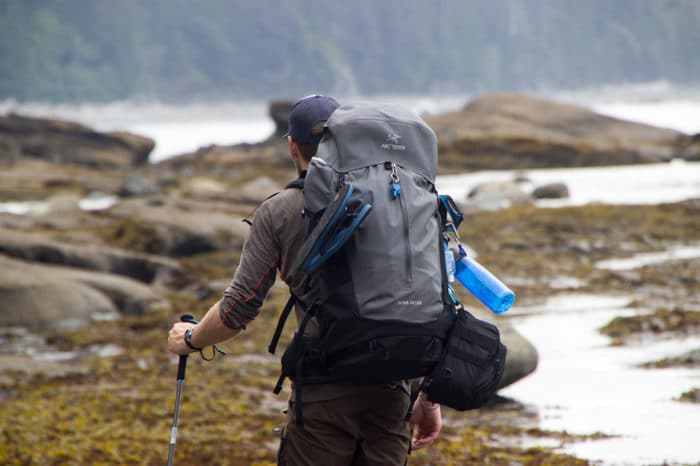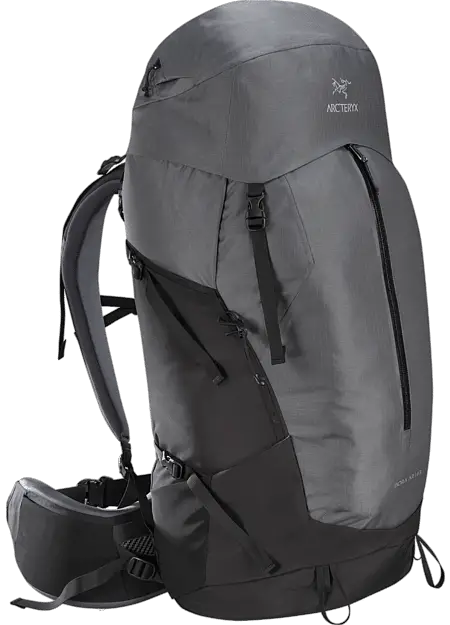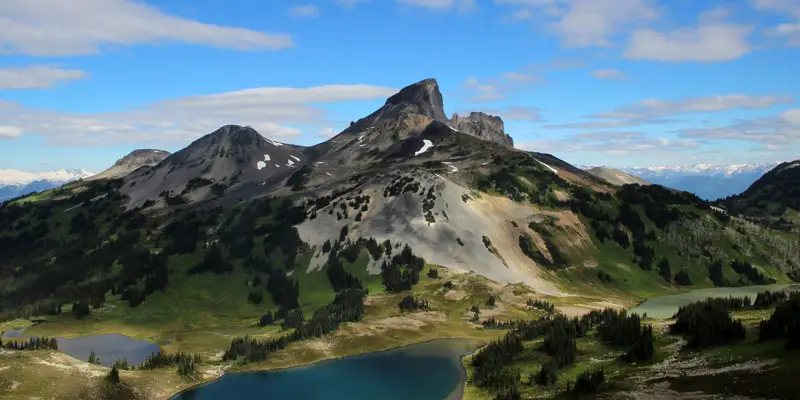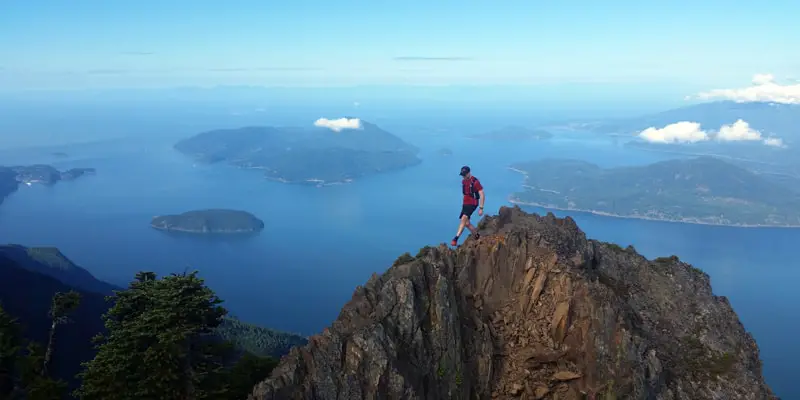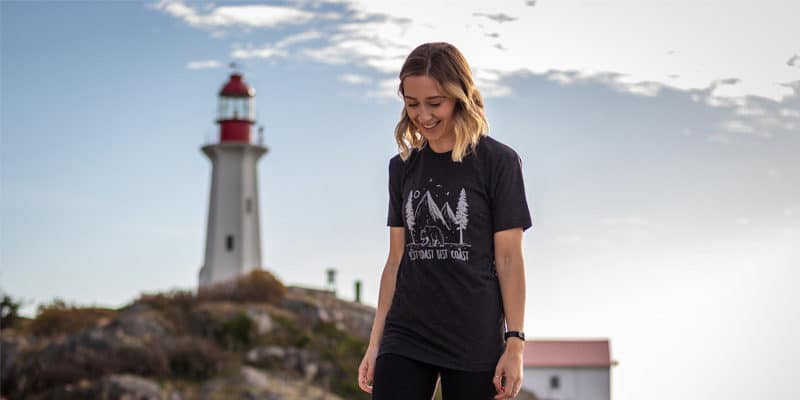First launched in 1994, the Bora backpack was one of Arc’teryx’s first premier lines of gear and has stood the test of time. In 2017, the Arc’teryx Bora AR backpack was re-designed and re-launched.
One of the biggest improvements to the Bora backpack is the RotoGlide hip belt. The RotoGlide allows the hip belt to rotate side-to-side and glide up and down to allow for more natural movement and prevent chaffing.
The Bora is now also lighter weight and more weather resistant than previous versions.
I tested the Bora AR 63 (Men’s Regular size) over a week-long trek of the West Coast Trail (75 km of rugged coastal British Columbia terrain). I’m 5’11 and 155 lbs with a 30 in. waist. At the start of my trek, I had the backpack loaded with a hefty 55 lbs of gear! Here are my thoughts on the Bora AR.
Pros
First and foremost, this is a comfortable pack to wear. For multi-day treks, this is my biggest consideration. If the pack is uncomfortable, what else matters?
The Bora AR provides plenty of options to adjust the backpack to a nice fit. The GridLock shoulder strap system allows you to easily adjust both the height and width of the straps on the back panel of the pack. I was able to take advantage of this to get the perfect fit over my shoulders.
Using the GridLock system on top of all the other regular backpack adjustments (sternum strap, hip belt, load-lifters), I’m confident nearly anyone can get the Bora AR into a very comfortable place with minimal effort. The back panel can also be formed to a different curve if desired, though I had no need to do this.
The RotoGlide hipbelt (demonstrated in the video below) really helps provide smooth movement of your body over technical terrain. The RotoGlide moves up and down to follow the movement of your back and rotates with the natural movement of your hips. This keeps the load stable and keeps your movements more natural and free. I found the RotoGlide to be a huge plus and not just a marketing ploy. The hip belt also comes in other sizes, but the regular size did a great job for me out of the box.
Both the hipbelt and shoulder straps feature a dual-density foam which I found to be very comfortable compared to other packs I’ve worn. The RotoGlide, coupled with thick foam cushioning of the hipbelt, gave me no chaffing or discomfort over the entire trek!
The weather resistant AC2 material on the kangaroo pocket and the removable lid was a big plus, especially on a trail like the West Coast Trail. Even with a waterproof over bag, water will always try to find its way inside your pack and it’s comforting to know rain isn’t going to seep in.
There was plenty of room in the kangaroo pocket for the items I wanted quick access to throughout the day, such as an insulating layer, map, Clif Bars, and so forth.
The top pocket on the lid was another great place for quick access. I found this is where I kept the electronics that came with me on the trek, along with sunglasses and a few other odds and ends. There is a secondary pocket underneath the lid as well, maximizing the use of the space within the lid.
The main pocket of the backpack is top loading and expandable with a cinch cord to close it up. Inside, there is a flap pocket for storing odd ends, and a sleeve where you can place maps or books. The sleeve is also compatible with a hydration bladder, although I didn’t use one.
On the overall volume: I was, with some effort, able to get all my gear into the Bora AR. I pushed the limits of what this backpack is designed to carry. I brought extras like a DSLR camera, batteries, hammock, and running gear with me. Had I packed without these items, all my food and gear for a full week in the backcountry would have been no problem for the Bora AR to handle.
Cons
Cons were few and far between, but there are a few things I felt could have been improved on the backpack.
I found the pockets on the hipbelt made it a little awkward to reach my water bottle. The mesh-pockets near the front of the hipbelt are too small for a water bottle (but great for snacks, cell phone, etc). This means your water bottle must sit on the side of the hipbelt, and (for me anyways) made it difficult to reach. It was even harder to place the bottle back into the pocket without asking for help from my hiking partner or removing the pack altogether. A way around this is to use a hydration bladder, but my preference is a bottle.
My only other complaint about the Bora AR was the side access zipper didn’t provide much use. With the pack fully loaded, the side access was tight and removing anything from the side wasn’t feasible. But, by carefully packing using the top-lid and kangaroo pocket, I was mostly able to avoid needing to get at anything buried down in the pack during hiking.
Conclusion
The Arc’teryx Bora AR comes in Men’s 50 and 63 L volumes, and Women’s 49 and 61 L volumes. There are Regular and Tall versions of the backpack available as well.
At 5 lbs, the Bora AR is neither a lightweight nor heavy backpack. It comes with the essential features, and most importantly the quality and durability one expects from Arc’teryx.
For treks of 4-7 days, it really has everything needed. I can’t imagine finding a backpack that is more comfortable to wear. With the durable materials used, I look forward to the Bora AR being my go-to backpack for many years to come in a variety of environments.
You can find out more or order the Bora AR here.

